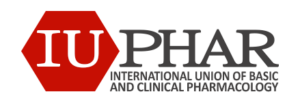
Secretary General
Previous Chair : IUPHAR COMMITTEE ON RECEPTOR NOMENCLATURE AND DRUG CLASSIFICATION (NC-IUPHAR)
- Issuing guidelines for receptor and ion channel classification, and addressing the main issues in pharmacology today
- Classifying the entirety of drug receptors/binding sites encoded by the human genome, and designating the polymorphisms which are functionally important, via a unique, cooperative, expert-based system
- Set up a website with access to data on all known receptor systems, freely available to all scientists, anywhere in the world : guidetopharmacology.org
Background: activities of IUPHAR
The International Union of Clinical and Basic Pharmacology (IUPHAR) is a charity reporting to ICSU (UNESCO): it has strong links with IUTOX (toxicology) and IUPAC (chemistry). IUPHAR represents 76 national pharmacological societies, with a clinical division and several Sections: the Nomenclature Committee (NC-IUPHAR), Education, Paediatrics Immunopharmacology, Ageing, Drug Metabolism, Natural Products, Neuropsychopharmacology, and GI sections. NC-IUPHAR has 20 members, many eminent corresponding members, and 90 (!) expert subcommittees representing ~800 scientists freely giving up their time to produce key reviews and the database. NC-IUPHAR meets twice a year (spring and autumn) in Edinburgh and Paris, with invited guests relevant to topics on the agenda (e.g. corresponding members). These meetings ratify the biannual database updates and addresses key scientific issues. Importantly, the committees integrate academic and industrial pharmacologists seamlessly. All data are freely available from the GtoPdb website, and all articles are open access; we have started an educational website with seed funding from ASPET.
In conjunction with the British Pharmacological Society (BPS), the University of Edinburgh (Jamie Davies PI), and partly funded by the Wellcome Trust, IUPHAR produces the IUPHAR/BPS Guide to PHARMACOLOGY database. GtoPdb is unique and offers an approach complementary to those taken by, for example, the European Bioinformatics Institute (EBI), because GtoPdb contains published information reviewed by the NC-IUPHAR expert committees. These experts consider features beyond the capability of machine-based data trawling, such as what we know and don’t know, variables affecting drug receptor affinity, the crucial challenges of multiple gene products, and has/can make recommendations in alternative splicing, epigenetics, allostery, disease and drug ontologies. The committees also consider how best to communicate these issues. The GtoPdb is being actively promoted worldwide by pharmacological societies such as Australia, Indian, Japan, China, Africa, and the US, resulting in a large international user-base.
Recent achievements of IUPHAR
The cumulative H-Index for IUPHAR publications is 84 from more than 100 publications , citations are listed here in Google Scholar. The recent articles which also include what we don’t know are found here in Pubmed. The 5-HT receptor chemokine receptor, cannabinoid receptors, voltage-and ligand-gated ion channel classes were entirely rationalised by NC-IUPHAR. A potential tsunami of spurious GPCR heterodimers (false-positives caused by overexpression in artificial systems) was stopped by recommending rigorous criteria. The recent (non-contentious) classification of transporters and the complete pharmacology of kinases in GtoPdb have been achieved in very short periods of time (~1 year).
An objective for IUPHAR is to put the massive amount of new knowledge into the hands of pharmacologists, and other scientists. Issues we have addressed are: Drug sites encoded by the human genome, (our current Wellcome Trust grant), allostery recommendations across all targets classes, alternative splicing of drug targets, receptor polymorphisms and isoforms, and epigenetic drug targets. Longer term goals include the classification and production of database sections for non-coding RNAs (in progress with HGNC), translational pharmacology of drug targets, immunopharmacology (led by Francesca Levi-Schaffer, Hebrew University of Jerusalem), antibodies (led by Marie-Paule Lefranc, IMGT), and linking rare disease ontology with the drug target ontology (Orphanet).
The cumulative H-Index for IUPHAR publications is 84 from more than 100 publications , citations are listed here in Google Scholar. The recent articles which also include what we don’t know are found here in Pubmed. The 5-HT receptor chemokine receptor, cannabinoid receptors, voltage-and ligand-gated ion channel classes were entirely rationalised by NC-IUPHAR. A potential tsunami of spurious GPCR heterodimers (false-positives caused by overexpression in artificial systems) was stopped by recommending rigorous criteria. The recent (non-contentious) classification of transporters and the complete pharmacology of kinases in GtoPdb have been achieved in very short periods of time (~1 year).
An objective for IUPHAR is to put the massive amount of new knowledge into the hands of pharmacologists, and other scientists. Issues we have addressed are: Drug sites encoded by the human genome, (our current Wellcome Trust grant), allostery recommendations across all targets classes, alternative splicing of drug targets, receptor polymorphisms and isoforms, and epigenetic drug targets. Longer term goals include the classification and production of database sections for non-coding RNAs (in progress with HGNC), translational pharmacology of drug targets, immunopharmacology (led by Francesca Levi-Schaffer, Hebrew University of Jerusalem), antibodies (led by Marie-Paule Lefranc, IMGT), and linking rare disease ontology with the drug target ontology (Orphanet).



